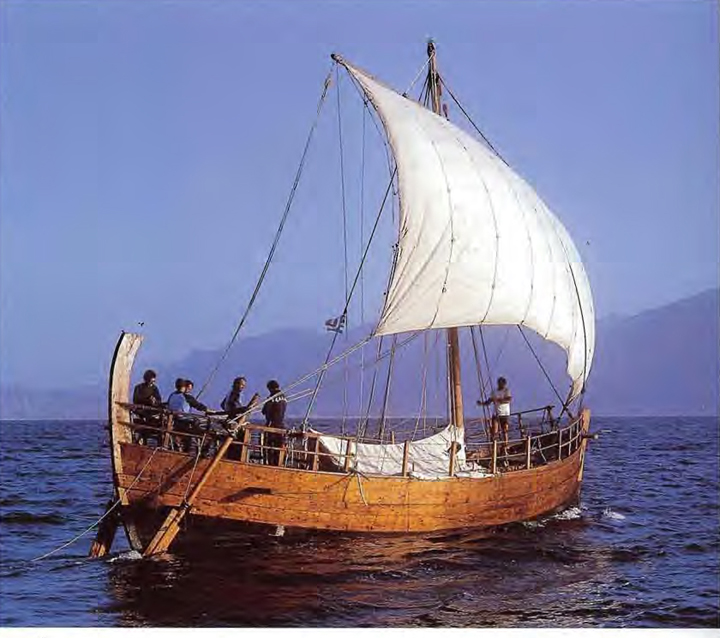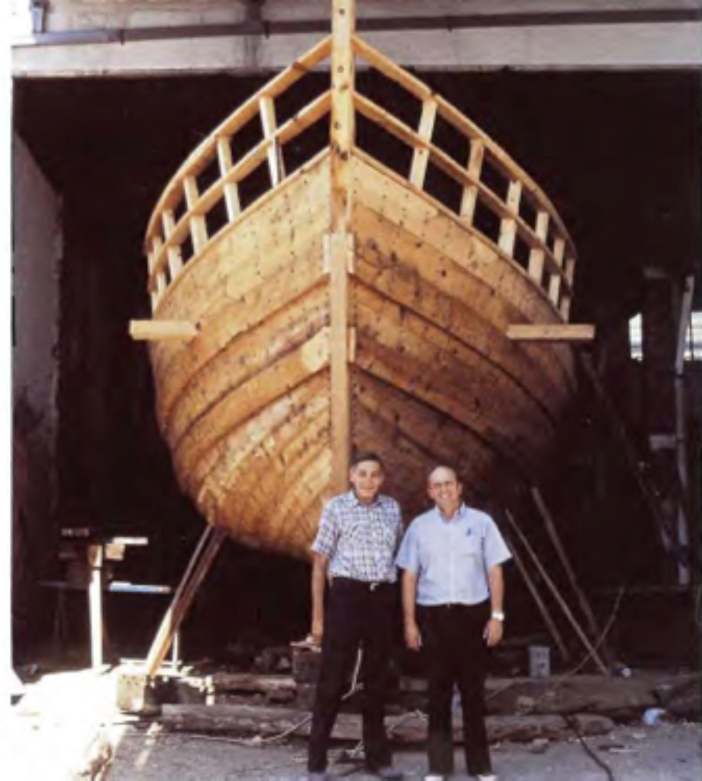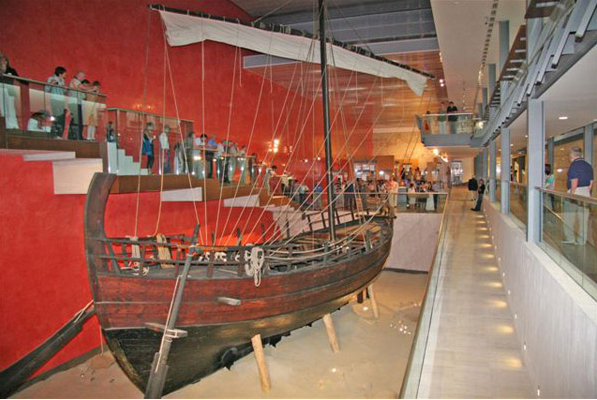
Kyrenia Ship
Dispensing with the need for rowing stations enabled a much more beamy design of boat to evolve. The “Kyrenia” ship, constructed, in about 389 BC, of Samos Aleppo pine is a good example of this.

Kryrenia reconstruction sailing in the Aegean sea
The wreck of the Kyenia ship was discovered in 1967 close to Kyrenia in Cyprus, hence its name. The wreck was very well preserved with approximately 75% of the ship still in good condition. It is now exhibited in the Ancient Shipwreck Museum in Kyrenia Castle where it remains on exhibit.
The sinking of the Kyrenia could have been caused by many factors, but evidence suggests that piracy and old age contributed to the ship’s fate. Carbon 14 dating of the ships planking and also of its cargo suggests that the ship was about 80 years old when she sank. A break in the ship’s keel had been fixed, and the hull was protected with pitch and a skin of lead sheathing, added towards the end of her life.
At the time the ship sank, more than 400 wine amphorae, mostly made in Rhodes, constituted its main cargo. Ten distinct amphora shapes on board suggest other ports of call, such as Samos in the north. Another part of the cargo comprised 9000 almonds in jars. 29 millstones were laden on over the keel in three rows and also served as ballast. At the stone quarry, probably on the island of Kos, masons carved letters of identification on the sides of these stones. All these bits of evidence suggest that the ship sailed southwards along the coast of Anatolia calling at Samos, Kos and Rhodes before continuing eastwards to her destruction in Cyprus.
Four wooden spoons, four oil jugs, four salt dishes and four drinking cups recovered in the shipwreck suggest that her crew on her last voyage consisted of four seamen. The ship's single sail had been taken down before she sank as the stern contained more than 100 lead rigging rings from a large square sail stowed there.
The wooden hull, built mostly of Samos Aleppo pine, measured 14.3 m long by 4.4 m beam. The hull was built in the "shell first" manner, quite the opposite of today's method.
Kyrenia II
In 1981 Manolis Psaros, a boat-builder in Parma, Greece undertook to build a full size replica of the Kyrenia ship.

The ship, called ‘Kyrenia II” was finally launched in June 1984. During 1985-6 she underwent sea trials and then undertook two experimental sea voyages from Piraeus to Cyprus and back in 1987.
The Kyrenia II sailed very well under different directions of wind and conditions of the sea. The average speed varied from 2 to 6 knots. She proved her seaworthiness, with a remarkable ability to sail into the wind.
Over the next 17 years from 1987 the ship was transported on the decks of large merchant vessels across oceans and seas. Kyrenia II was exhibited at the Mystic Seaport Museum in Connecticut, in New York (fig. 6), Nara, the old Japanese capital, for the Silk Road Exhibition, Seville for the World Fair, Hamburg for its 700 years commemoration and ten different Greek towns.
Kyrenia II is now retired from active sailing and is displayed as a permanent exhibit in the Thalassa museum, Ayia Napia, Cyprus.
